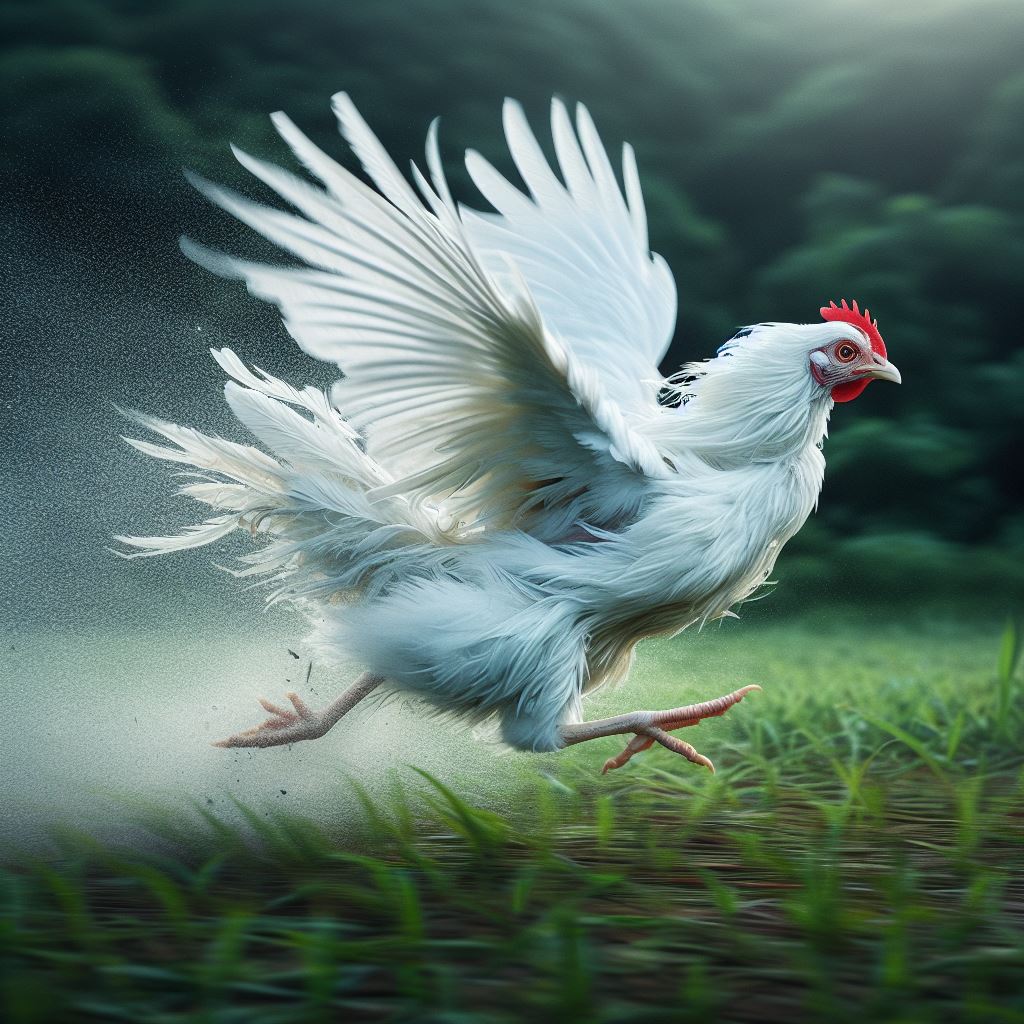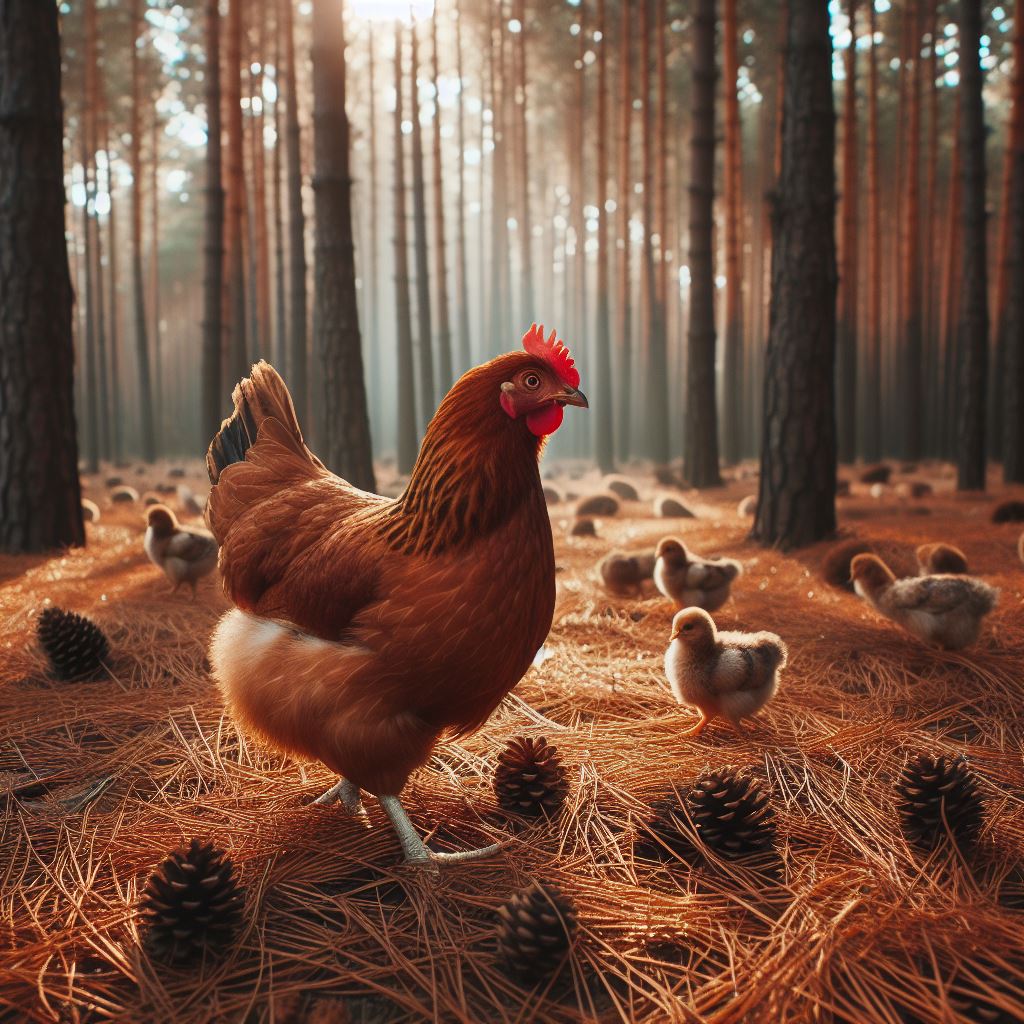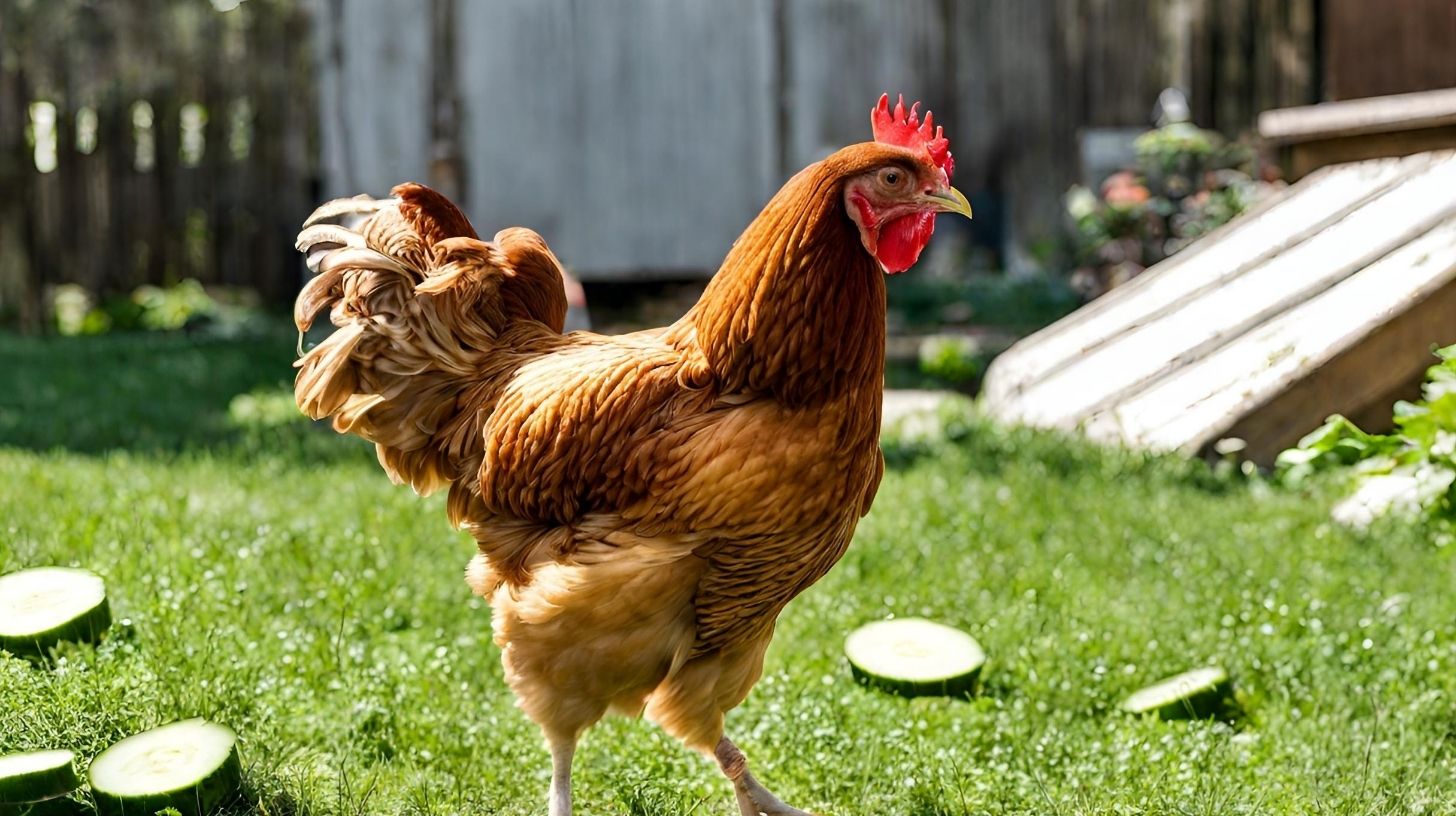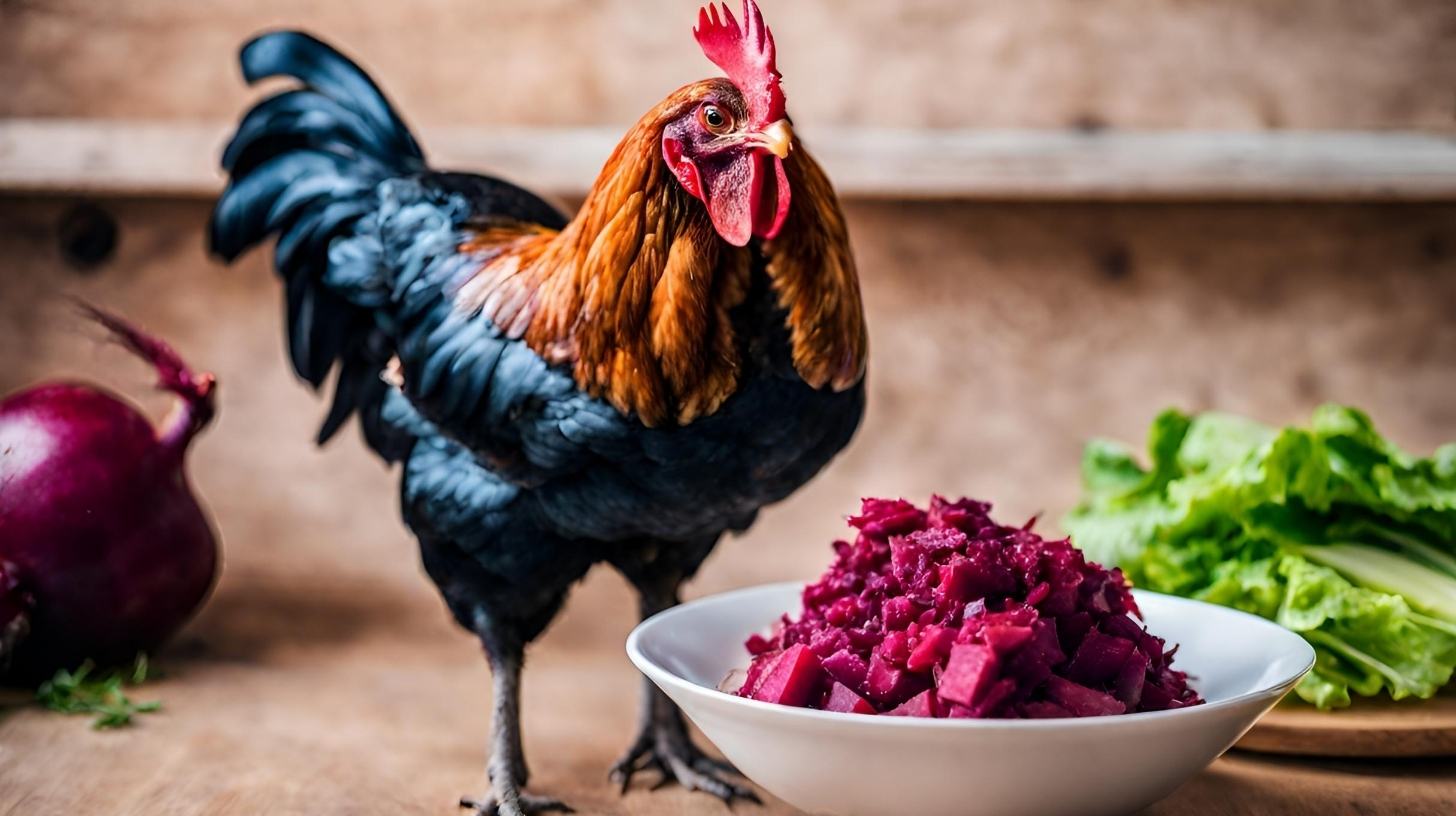How Fast Can Chickens Run? You Won’t Believe How Quick Can Be

Table of content:
- Chicken Breeds and Attributes
- What Speed Do Chickens Reach When Running?
- Factors That Enable Rapid Chicken Sprints
- Breed Spotlight – Built for Blazing Speed
- Chickens on the Run – Common Sprinting Triggers
- Built for Speed: Skeletal and Muscular Adaptations
- Sprinting Chickens – A Sight to Behold!
- Training Chickens for Speed
- Frequently Asked Questions About Speedy Chickens
- The Need for Speed Rooted Deeply In Chicken DNA
Chickens are one of the most common domesticated animals, raised by farmers and backyard enthusiasts alike for their eggs and meat. But how much do we know about these feathered creatures scurrying around our yards? Specifically, how fast can chickens run when given some open space? Read on for a deep dive into the sprinting abilities of these surprisingly speedy birds!
Chicken Breeds and Attributes
There are hundreds of unique chicken breeds, each with their traits optimized by selective breeding over thousands of years. Some key physical attributes that impact running speed include:
- Size – Large fowl like Plymouth Rocks and Orpingtons tend to be slower, while smaller bantams have more speed and agility.
- Leg Length – Longer legs like those on a Leghorn allow for longer strides and faster movement.
- Body Shape – Streamlined bodies seen in game breeds are built for speed and endurance while traversing the countryside.
Additionally, disposition plays a role. Skittish breeds accustomed to evading predators in the wild like Rhode Island Reds, are nimble and swift runners when startled.
What Speed Do Chickens Reach When Running?
So exactly how fast can a chicken run at full tilt? Researchers have clocked chickens sprinting at speeds exceeding:
- 9 mph – The average domestic chicken can hit speeds approaching 10 mph in short bursts.
- 13 mph – Elite specimens from game breeds bred for running ability can reach speeds over 13 mph.
- 20 mph – The current Guinness World Record for fastest chicken is 13 feet per second, or 20 mph!
So while most backyard birds hover around that 9 mph range, certain chickens can run nearly as fast as an Olympic sprinter under the right conditions.
Factors That Enable Rapid Chicken Sprints
A chicken’s physique and environment impact how rapidly it can bolt in pulse-pounding bursts of speed:
Physiological Factors
- Powerful legs and claws – A chicken draws its explosive power from strong legs and feet equipped with sharp talons. These serve as their acceleration and braking mechanisms.
- Lean muscle mass – Flight muscles attached to their breastbones allow for rapid wing flapping and enhanced running thrust.
- Enlarged hearts and lungs – Built to supply oxygen to hardworking muscles during sprints across open terrain in their ancestral origins.
External Factors
- Clear paths – Unobstructed backyards and ranges without obstacles or debris provide chickens with an open track to strut their speed.
- Predator evasion – When alarmed by overhead hawks or approaching foxes, chickens rely on their swift feet to escape danger as fast as possible.
- Competition – Jockeying for social dominance or favorite treats can spur short distance contests between chickens in a flock.
As with any athlete, individual training, conditioning, nutrition and rest are paramount. Free range chickens constantly exercising have greater speed and stamina potential than confined birds without daily activity.
Breed Spotlight – Built for Blazing Speed
While any chicken can scramble to safety if pressed, certain breeds have the genetics tailored specifically for lighting-fast sprints across sizable distances:
| Breed | Max Speed | Purpose |
|---|---|---|
| Rhode Island Red | 10+ mph | All-around utility bird is known for alertness and ability to evade threats. |
| Leghorn | 12+ mph | Lean Italian egg layer developed to cover territory while foraging. |
| Cornish | 13 mph | Stocky British meat bird excellent at bursts to escape predators. |
| Old English Game | 15 mph | Compact and muscular athlete bred for cockfighting and foot races. |
These traditional breeds have running and survival instincts bred into their DNA over generations. Through selective propagation of the quickest individuals, steady improvements were made decade after decade.
Chickens on the Run – Common Sprinting Triggers
While idle backyard chickens spend much of their day walking and pecking – content to move at their own leisurely pace – certain situations can instantly trigger their flight response and elicit startling speeds:
- Predator Evasion – Foxes or hawks entering the area will send chickens scrambling for cover. Fighting is not their first instinct when facing danger from above or larger mammals. Their immediate reaction is to run and hide.
- Alarm Calls – When one bird sounds a warning call or gives chase, the entire flock joins in the hurried activity whether they know the exact threat or not. Better to run first and discover the reason after reaching safety.
- Startle Reaction – Quick movements or loud noises can cause a chicken to instinctively burst into a dash of 3-5 steps – even if the startling event poses no real danger. They rather sprint needlessly than become prey by not reacting quickly enough.
- Racing for Treats – When allowed access to extra food, scrubland, or nesting areas, chickens will race each other vigorously for the prized resource now up for grabs.
In each case, speed saves the day so chickens evolved into athletic avians able to accelerate rapidly on demand.
Built for Speed: Skeletal and Muscular Adaptations
Over thousands of years enduring as prey while roaming Asian jungles and forests, ancestral junglefowl developed specialized skeletal structures and musculature allowing for bursts of significant speed:
Skeletal
- Light, porous bones
- Fused wishbone adding stability
- Broad breastbone for large flight muscles
- Long legs with minimal feathering
Muscular
- Powerful thigh and drumstick muscles
- Feet with sharp talons for traction
- Flexible hip, knee and ankle joints
- Large cardiac and respiratory capacity
Partnered with lightweight bodies and aerodynamic profiles, chickens have all the natural engineering they need for their sprinting, fluttering lifestyles.
While not distance runners by any definition, chickens are well equipped for rapid reactions and maintaining speed for short durations. These characteristics served them well as prey animals where quick action meant the difference between becoming food or living to see another day.
Sprinting Chickens – A Sight to Behold!
For those fortunate to witness full grown chickens open up into a breathtaking sprint, it’s both comical and impressive:
- Feathers ruffle as they drop their heads and start motoring.
- Wings slightly outstretched for balance and stability at higher rates of speed.
- Feed flying in their wake if they happen to start their run mid-meal.
- Legs a blur as feet frantically circle Like Roadrunner from the classic cartoons.
- Squawks and clucks doppler as they streak past at 9, 12 or even 15+ mph!
Once momentum builds, most chickens can maintain significant speed for approximately 100-200 feet before pulling up and slowing back down to survey their surroundings. However, the racing elite may sprint much farther before needing to rest and recover.
Training Chickens for Speed
Think your feathery flock has unlimited potential? You may consider increasing speed and stamina through training routines like:
- Regular runs chasing treats, favorite foods or humans initiating play.
- Rotating through multiple large pens daily to maximize movement.
- Introducing obstacles to hurdle over like logs, hay bales or planks.
- Tossing mealworms on occasion they must run about while snatching them up.
This will keep cardiovascular health, muscle strength and fast-twitch reflexes at peak potential. Monitor for any signs of stress, injury or exhaustion. Proper rest and diet must support extra activity to avoid overtraining.
With time, your champion racers may emerge ready to compete at county fairs or organized sprinting events near you. There may be an untapped Usain Bolt of poultry waiting to unfurl their wings in your coop!
Frequently Asked Questions About Speedy Chickens
How long can a fast chicken run at top speed?
Most chickens can hold peak speeds up to 15-30 seconds depending on conditioning. Elite specimens with ideal genetics and training may sprint at 80%+ of max velocity for a minute or more before tiring.
What is the turning radius of racing chickens?
Agile chickens can execute sharp 45 to 90 degree cuts at speed. Their lightweight, compact frames allow for rapid changes of direction without losing momentum.
Why did chickens evolve the ability to run so rapidly?
As prey animals originating in the wilds of Asia’s jungles, pheasants and junglefowl relied on explosive speed to escape predators hunting them for food. Over thousands of generations, the survival of the fleetest encoded speed into their DNA.
Can pet chickens be trained for racing events?
Absolutely! With the proper selective breeding and training techniques, domestic chickens make fine racing competitors. Talk to your local agricultural society to find contests accepting poultry entrants. Events may include hurdles, relays and more!
What health risks exist for racing chickens?
Breeding solely for speed without attending to cardiovascular and musculoskeletal health can lead to enlarged hearts, bone deformities, lameness and other disorders in high performance fowl. Responsible training and husbandry prevent athletic injury in chickens pushed to their physical limits.
So while your backyard birds may not be ready for the big leagues just yet, even humble hens possess the genetics of a champion racehorse passed down from their jungle ancestors. If pressed into service, they can turn on the afterburners and rocket across the landscape at remarkable velocities!
The Need for Speed Rooted Deeply In Chicken DNA
While content to mosey through the grass on any given day, chickens retain the instinctual urge to explode into sudden sprints thanks to ancient wiring imprinted into their core DNA. Lightning quick reflexes and powerful leg thrusts meant survival for unprotected ground birds facing hungry predators.
Those split second reactions still show today when danger appears and placid hens morph instantly into feathery track stars. Racing full throttle to safety at speeds belying expectations.
So next time you spot your flock casually ambling around the coop or yard, remember how fast chickens can run when their ancient instincts kick in! You may just witness your poultry speed demons in rare form.
Welcome. I’m Adreena Shanum, the proud owner of this website, and I am incredibly passionate about animals, especially poultry. I founded adreenapets.com as a labor of love, stemming from my desire to share my knowledge and experiences with poultry enthusiasts worldwide.





